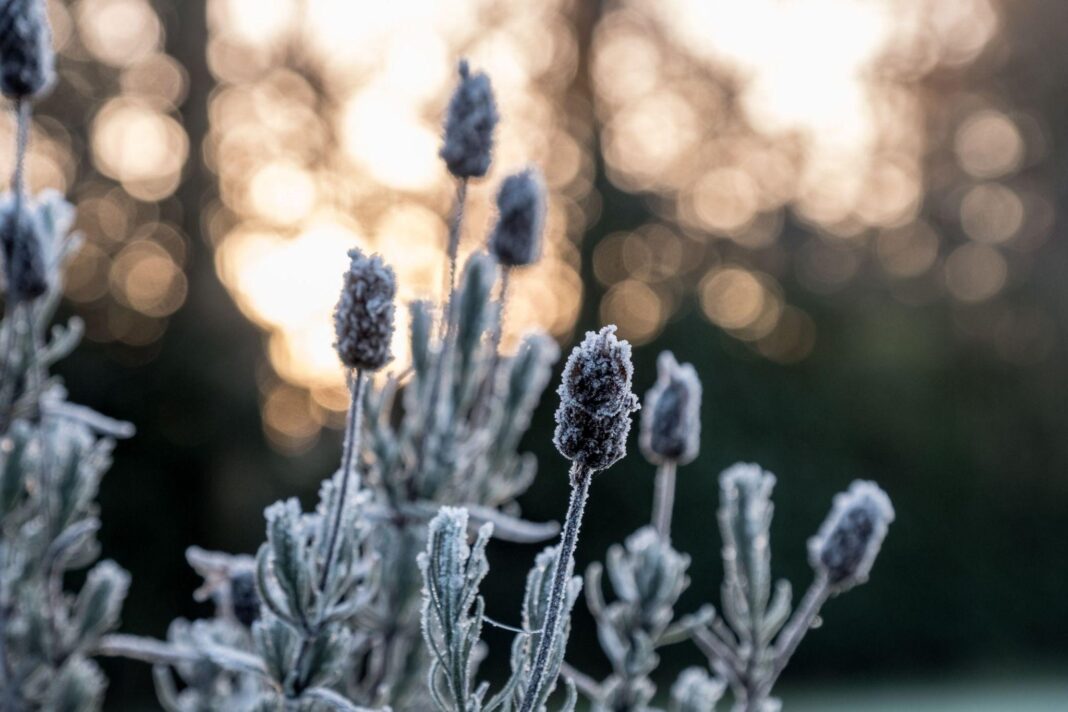Whether you were smitten by some eye-catching hue at the garden center or simply wanted to get a head start on the gardening season, planting too early may lead to a disaster when a cold snap hits. It is not difficult to help your seedlings survive the great frost, but it does need some planning.
In most circumstances, you may rely on improvised measures to preserve plants when the temperature drops. However, for bigger plantings, like a vegetable garden, you’ll need to prepare yourself ahead of time with the proper tools to protect plants from frigid mornings. The cold snap has an effect on more than just our natural fauna. Frost and snow may also wreak havoc on our gardens, halting the growth of outside plants and bushes.
“Hot and cold weather may both impair a plant’s heath,” Cold temperatures cause the cells of a plant to freeze, inflicting harm and disrupting the movement of nutrients and water surrounding it. Frost is described as a thin coating of ice that occurs when water vapor transitions from a gas to a solid when exposed to temperatures below freezing.
Frost harms plants by causing water in plant cells to freeze, causing fluid mobility to be disrupted and plant tissues to be damaged.
How do Freezing Temperatures Damage Susceptible Plants?
When the temperature outside drops below 32 degrees Fahrenheit (0 degrees Celsius), the water within and outside plant cells freezes. The plant’s cells are punctured by the ice, resulting in the demise of that area of the plant.
What to do:
Check Sky Conditions
Frost (also known as white frost or hoarfrost) happens when air temperatures fall below 32°F and ice crystals develop on plant leaves, hurting and occasionally killing fragile plants. Clear, quiet sky and dropping afternoon temperatures are often ideal for frost formation. Temperatures lowering quickly under clear, breezy skies—especially if the wind is blowing from the northwest—could suggest the arrival of a mass of arctic air and a harsh freeze. The migration of vast, cold air masses is the foundation of a hard or lethal frost. As a result, temperatures below freezing kill all but the most cold-tolerant plants.
Know your plants!
The possibility of frost damage is determined by the plant itself. Plants that are still growing with new growth throughout the fall are the most vulnerable—especially fresh growth. Plants with maroon or bronze leaves have better resistance to frost because these leaves absorb and store heat. Plants with downy or hairy leaves retain heat as well. Compact plants have fewer leaves that are exposed to cold and drying winds. Plants that are close together also protect one another.
Protect Individual Plants
At planting time, place heat caps — stiff plastic containers with venting holes – over each seedling. Hot caps function similarly to cloches (small greenhouses), but venting holes avoid the need to place and remove the covering on a regular basis. Make a hot cap out of plastic two-liter bottles or gallon jugs with the bottoms cut off and lids removed (but saved). When frigid temperatures sweep through, replace the lids at night.
A Wall O’Water tepee, which encircles individual plants with a sleeve of water-filled tubes, is a variation on the hot cap notion. During the day, the water absorbs the heat of the sun. At night, when the water gently freezes, it releases the sun’s stored radiant heat, maintaining a constant temperature. Metal Buildings and metal sheds are best for greenhouse sheds. Try to use Metal buildings as your farm building.
A cloth covering is preferable since it allows moisture to escape while protecting your plants from cold. Fabric covers will keep the frigid air from coming into direct contact with the plant’s wetness while also trapping heat that is flowing from the ground. Large plants and bushes are best covered with bed linens or comforters. Although newspaper may be used on low-growing greenery, it might be difficult to keep it in place. I’ve made do with old pillows, sheets, towels, and even cardboard boxes. Simply make certain that whatever you choose to cover your plant reaches the ground and traps the warm air inside the canopy.
Plastic can be used, but it’s important to keep in mind that it shouldn’t come in contact with your plants. Plastic that comes into touch with your plants can sometimes be worse than no protection since it traps moisture against plant tissues, resulting in additional frost damage. Many gardeners will construct tall pillars or forms around frost-sensitive plants so that they may drape their covers over the plants and secure them without fear of the covers blowing away or harming the plants’ branches during the night. Plastic may be used to cover a structure like this as long as it does not come into contact with the plant.
Count On Water
As the water evaporates, moisten the soil soon before dusk to boost the nocturnal air temperature around the plants. During the day, fill gallon jugs or buckets with water and set them in the sun. Place them near vulnerable plants at night. If the water freezes, it will emit heat, which will help to cool the air. To boost midday heating, paint a few water-holding containers black for the best impact.
Know The Limits
You must know the point at which prized greenery fades to frost-burned brown in order to know what to do when freeze warnings are issued. The usual rule is that most plants will freeze in five hours if the temperature remains at 28°F.
There are, of course, exceptions to this rule. When temperatures drop to 32-33°F, seedlings with their sensitive new leaves typically die. Plants in the tropics have different low-temperature tolerances. When temperatures drop below 40°F, some keel over, while others collapse at 35°F. Other plants are naturally hardy, surviving temperatures as low as 18-20°F. Search garden books and internet resources for the threshold for your plants.




